Galtaji is a narrow valley on the eastern hill range in Jaipur, acclaimed for Galta Temple & Kund. Over the last few years, Galtaji has become popular among travelers as Monkey Temple in Jaipur. It is a notable pilgrimage in Jaipur dating to ancient times and is a historic site for Ramanandi Sadhus & followers. Reliable information on the history of Galtaji is unavailable. According to a popular local legend, Galta Ji is named after the famous Rishi Galav who did his penance for 60,000 years at this site. Pleased with his devotion, the almighty blessed this place with a perennial source of holy water which many people believe is the sacred water of the Ganges. It still flows and accumulates in a tank meant for the holy dip called Galta Kund. Well, a legend is a legend and it cannot replace historical facts.GaltaJi is one of the famous temples in Jaipur. 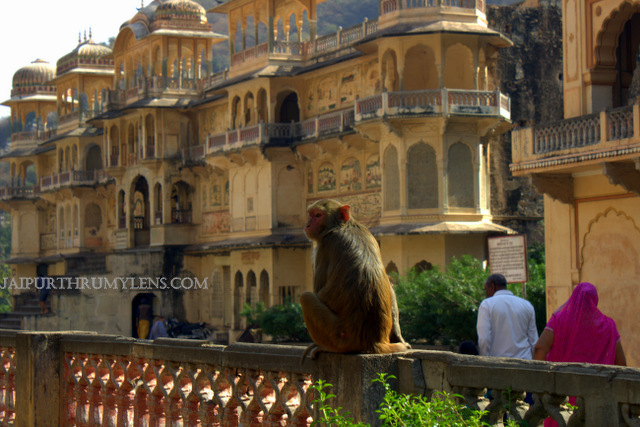
According to M.M. Ninan, a prominent author on Hinduism, Galtaji has a temple dedicated to Lord Shiva dating to 600 AD. Some claim that this temple still exists in the form of a cave temple. Galta Ji is popular among tourists as the Jaipur Monkey Temple.


The Monkey Temple At Galta Ji Jaipur Guide
Having visited these temples many times over the years, I realized their real beauty during my recent explorations.
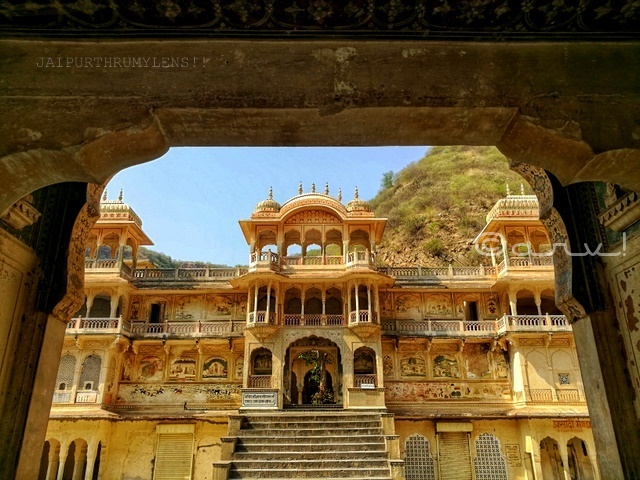
What is the History of the Temple?
Apart from the mythological aspect, historians and researchers have something more to add. As per widespread belief, Jogis or babas used to live here till the 16th century when one Ramanandi Sadhu by the name of Krishnadas Payo Hari came here & drove them away with his mystical & spiritual powers. It is believed that Krishnadas was a Payobhaksha, living on a “milk-only” diet. This led to the word Payo being added to his name. Over the years, it became an important center for Ramanandi Hindus and Naga Sadhus who also took part in many wars.
Ramananda was a saint following the Ramanujacharya sect of Vaishnavism (Hinduism) in medieval India. Ramanandis worship Lord Ram as well as Vishnu and consider themselves descendants of Luv & Kush, sons of Lord Rama. Although Ramanandis fall under the Ramanujacharya sect of Vaishnava Hindus, over the passage of time many differences developed between their philosophies. The center of Ramanjuacharya Hinduism is in Tamil Nadu (Totadri Math) and for this very reason, Galtaji is called Uttar Totadri (North Totadri).

Is It Worth A Visiting Galta Ji Temple?
Galtaji is a leading religious center for Vaishnav Hindus. In recent years, there has been a strong tussle for power between Ramanandis and Ramanjuachrya sect, which led to a court case. If you have a lingering question on the importance of Galta Ji for the Hindu religion, consider the following information.
- The acclaimed Indian poet Tulsidas devoted 3 years to Galtaji and composed the “Ayodhya Kand” chapter of the famous Ramcharitramanas.
- Shri Nabha Das composed Bhaktamal/ Sri Bhakta Maal in Galtaji.
- It needs to be mentioned that the International ISKON movement started by Swami Prabhupada used Govind Bhashya as its founding philosophy. This was written in 1718 AD by Swami Baldeo Vidyabhusan in Galta Ji.
- It is claimed that Mughal emperor Akbar also visited Galta Ji & sought blessings. Upon completion of his wish, he donated 2592 Bigha of land to the Acharya or head of Galta Ji. This grant is preserved and Galta Peeth considers it a historical document.
Galta Peeth follows a system of Acharya who presides over this place. The first Archarya was Payo Hari. It is currently headed by the 17th Archarya.
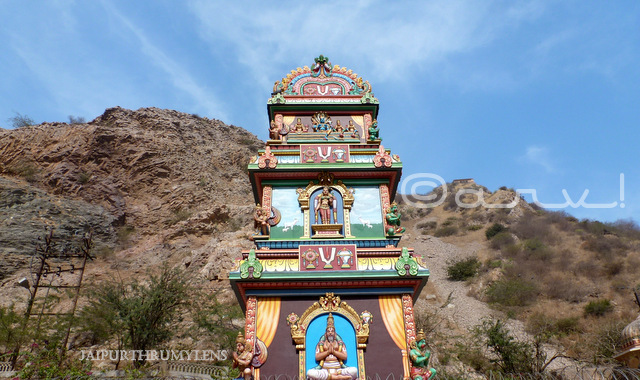
It is mentioned in the script of Galvashram Mahatmaya that on a full moon day in the Hindu month of Kartik which is also known as Kartik Purnima, the trinity of Hindu Gods – Lord Brahma, Lord Vishnu, and Lord Shiva visit this place. Hence, a bath in the holy tank which is known as Galta Kund provides multiple blessings.
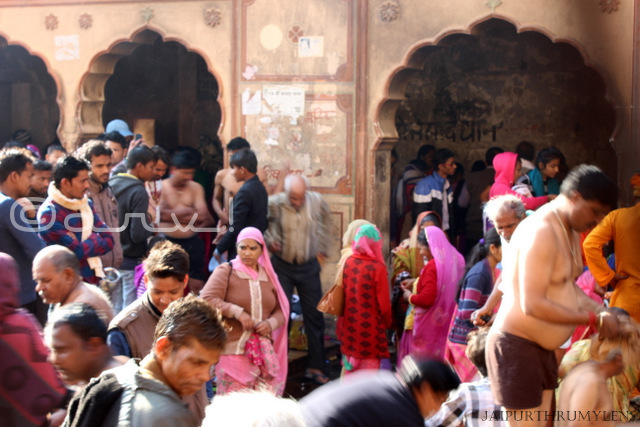
There is yet another belief that the religious pilgrimage of four Dhams popular among Vaishnav Hindus and Sapt Puri is not complete unless one experiences a holy dip in Galta Kund. Many devotees visit Galta Ji on Makar Sankranti.

I’m unsure if this is widely believed or followed. However, unlike Char Dham or Sapta Puri, you are unlikely to find hordes of devotees flocking here. It is definitely popular among locals and the neighboring area. Generally, travelers from abroad love visit to this site. It offers a cultural experience. The same might not hold true for everyone, especially Indians. Visitors might not enjoy the filth associated with feeding monkeys and cows.

Things to see?
The magnificent architecture of Galta Temples, Galta Kund, and the monkeys. The temples here are also known as Jaipur Monkey Temple.
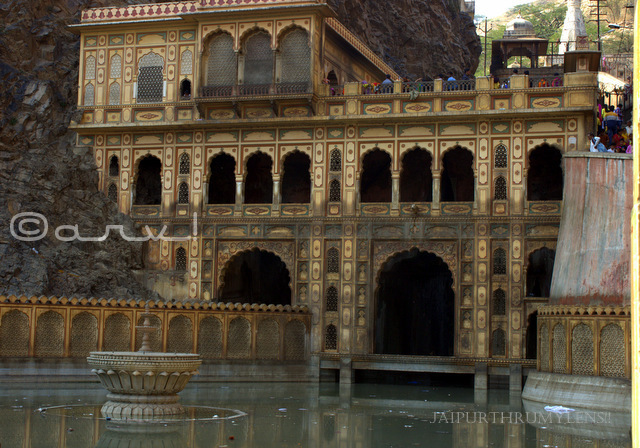

This place draws a considerable number of devotees from the neighboring villages since it’s a leading local pilgrim too. Makar Sankranti & Kartik Purnima are a few occasions when people throng here in large numbers for the holy dip of the Kund.

Even though these temples are a big tourist attraction, I have always found locals outnumber tourists.
These temples were built during the reign of Maharaja Sawai Jai Singh II, the founder of Jaipur City in the early 18th century. There were small temples in nearby hills before these temples which are now in a ruined state.
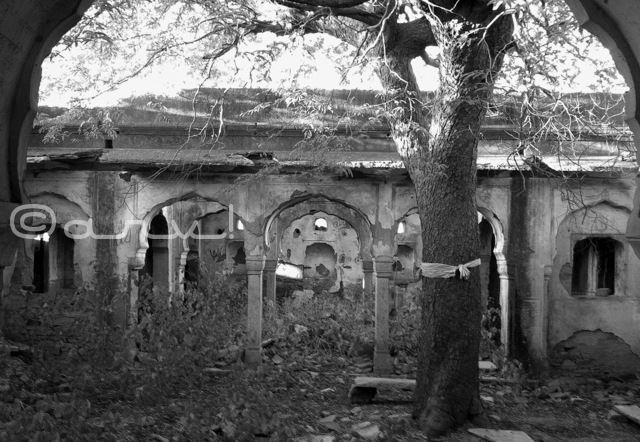

These temples have beautiful frescoes & paintings from Indian mythology and Hindu religion on the walls & ceilings. The architecture is mesmerizing as it uses canopies/ chhatri, lattices, the windows in a unique style which is a hallmark of Jaipur architecture.
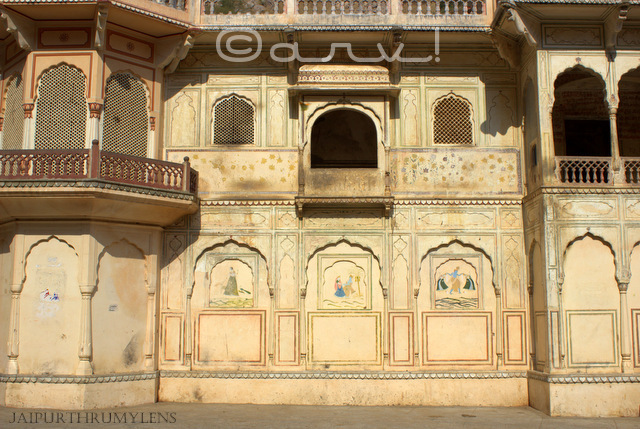

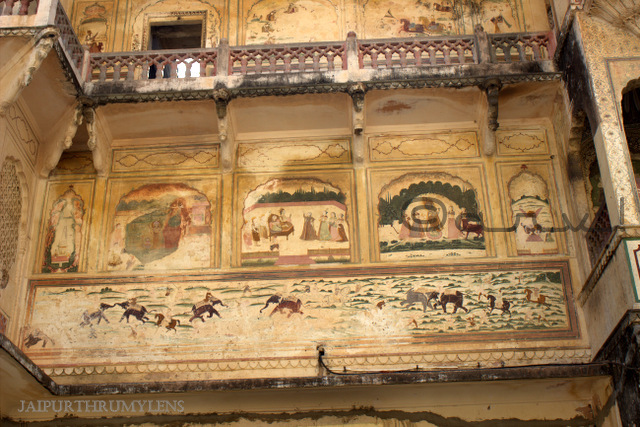

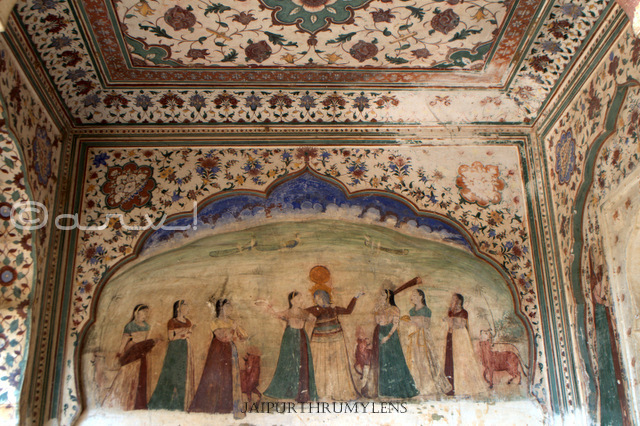
Which God Is Galta Temple Dedicated to?
Galta Ji has a few temples and it is idols of Ram, Krishna, and Hanuman in Galta Temple. Out of the three temples in Galta Ji, two have been constructed in Haveli style- Shri Gyan Gopal Ji temple & Shri Sitaram Ji temple. The latter is the biggest among all temples at Galtaji. Shri Sitaramji Temple has five sanctums & idols of Lord Rama depicting various life stages.

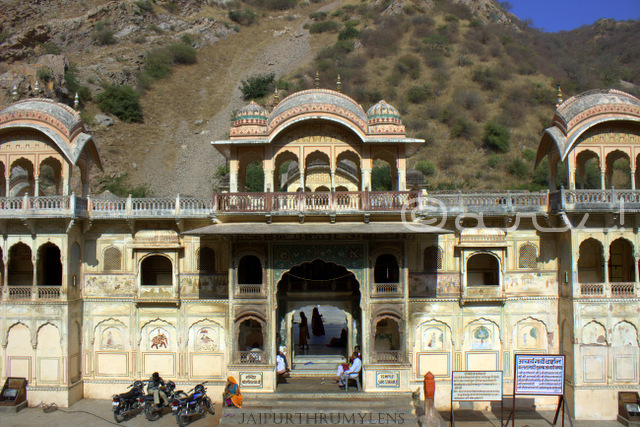

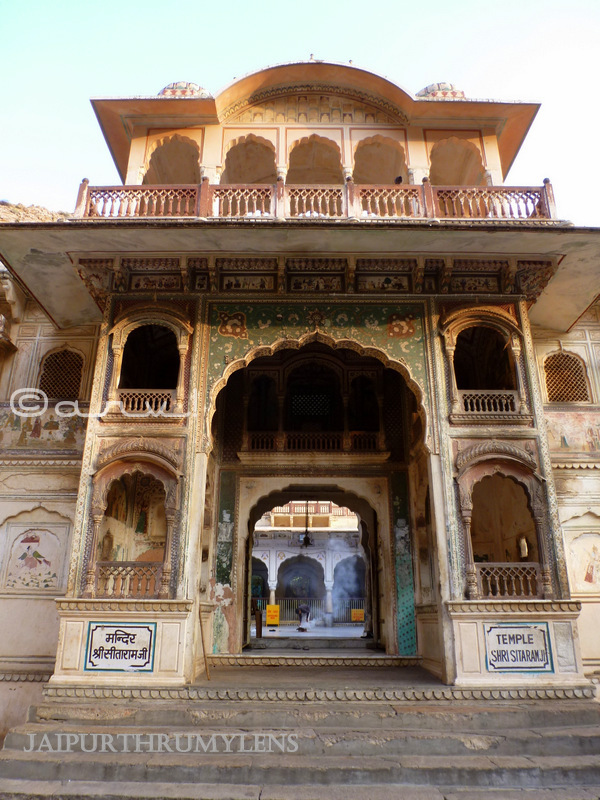

There is a popular belief that the idol of Shri Ram Gopal Ji in Shri Sitaramji Temple resembles both Lord Krishna and Lord Rama. 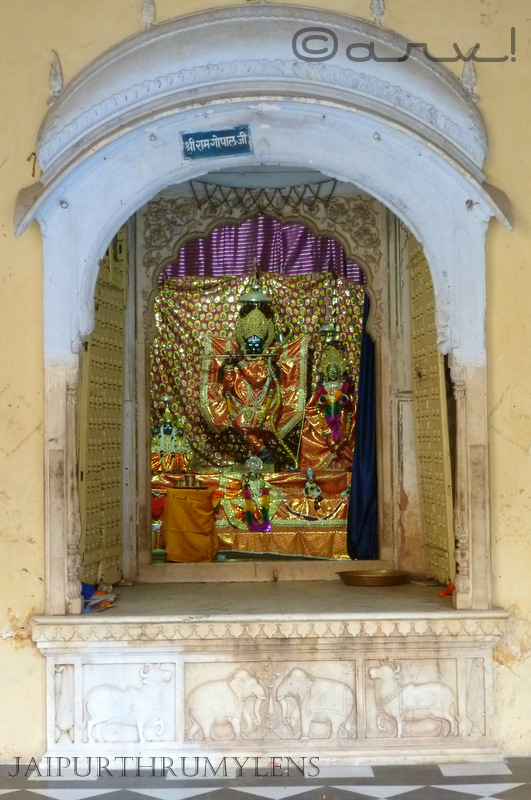

A small temple dedicated to Lord Hanuman can be found in one of the annexes of this temple. The temple management claims that it has Akhand Jyoti, a flame that’s never been put off since the idol was consecrated centuries ago. I’m unsure about the authenticity of this claim.


Shri Gyan Gopal Ji temple is smaller than the two and contains the idol of Lord Krishna. This compound also houses a school for the students and disciples.
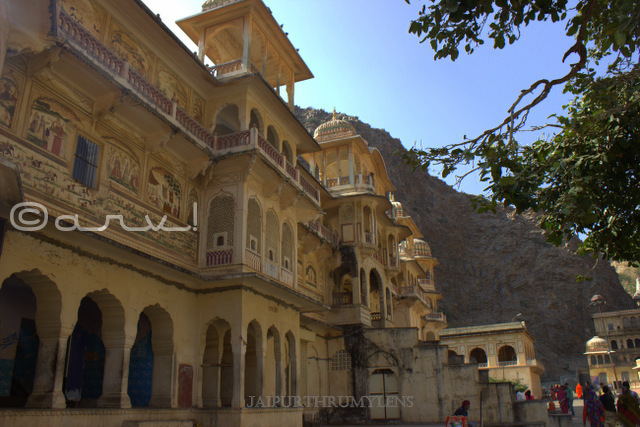

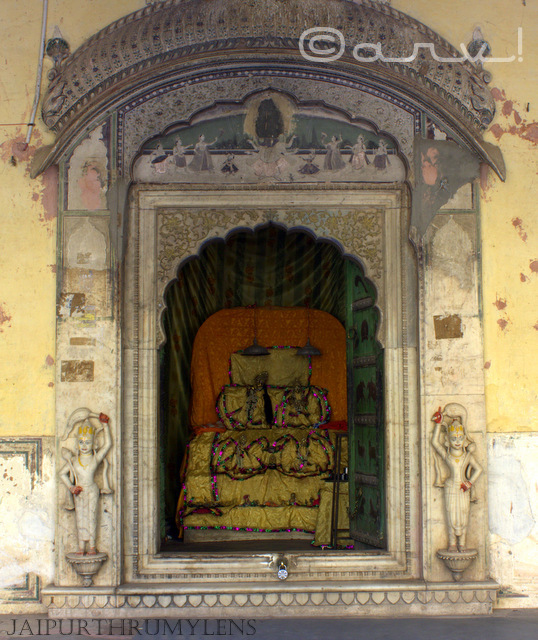
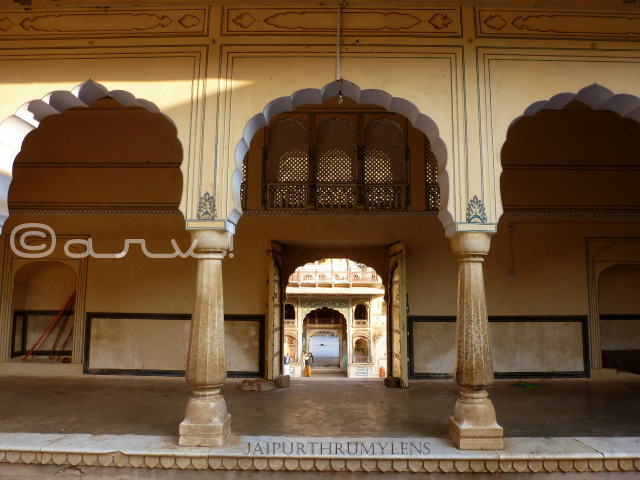
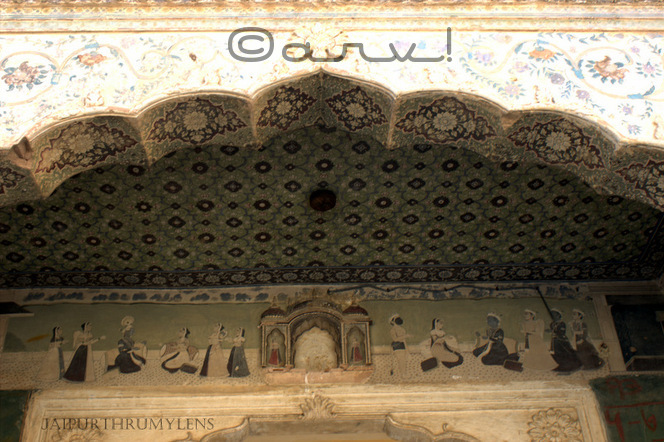
The entire stretch from the Galta Gate to the Shri Sitaramji temple has many small temples. Sun temple or Surya Mandir which overlooks Jaipur city is the prominent one in this area.
Due to the 1981 Jaipur floods, these Temples were submerged. Thankfully, restoration brought back its glory.
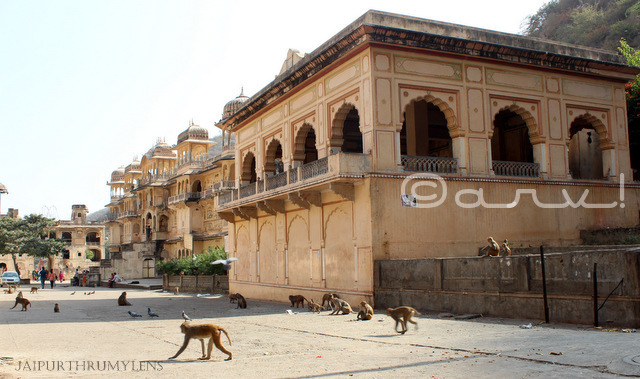
Monkeys at Galta Ji Temple
The most common species of monkey you will encounter is Rhesus Macaque. In the past, other monkey species like Gray Langurs were also spotted but these have been driven away by Rhesus Macaque. Gray Langur is less aggressive in comparison to the red-faced Rhesus Macaque.
Visitors will notice the presence of monkeys everywhere in Galtaji. While this may startle some but they are harmless unless provoked. Monkeys are used to seeing people around as devotees visit Galtaji to offer them food.
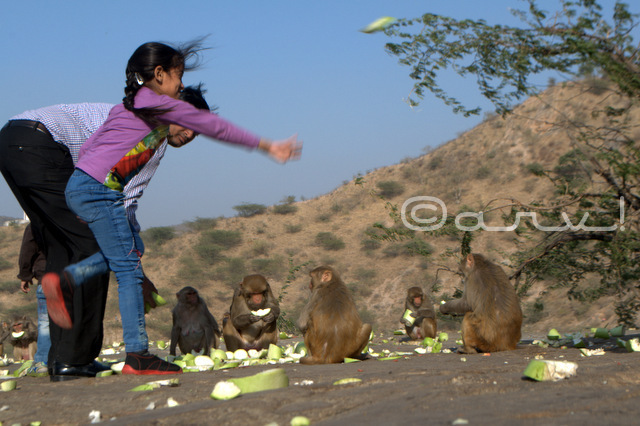
Stay safe by ensuring you are not carrying any food items with you. It is best to stash it in your bag, away from the prying eyes of monkeys. They cannot differentiate between a devotee & a tourist!
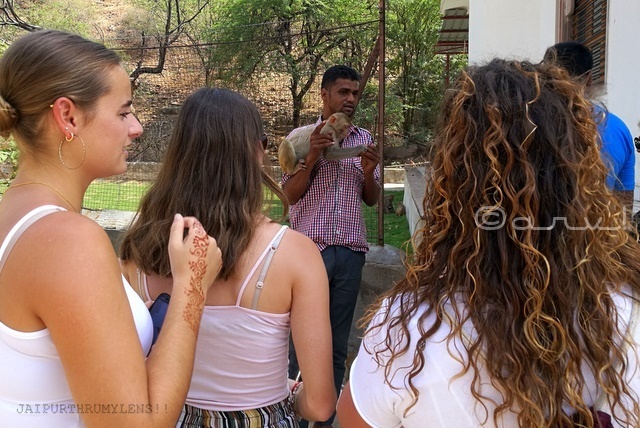
Monkeys and safety
You might come across a guide or a local who will offer you an opportunity to shake hands with a monkey or photograph with a monkey. Please note this is not a safe practice. Many travelers do but no one can guarantee safety from a monkey bite! These are wild monkeys and are not trained to perform these acts. Many travelers have raised concerns regarding catching rabies from monkeys. Some question these claims due to a lack of evidence. I always advocate safety first.
A few guides also suggest tourists offer bananas or peanuts to monkeys to earn good karma. I suggest not doing so. If they see humans carrying edible items they assume it will be offered to them; not offering them makes them aggressive.
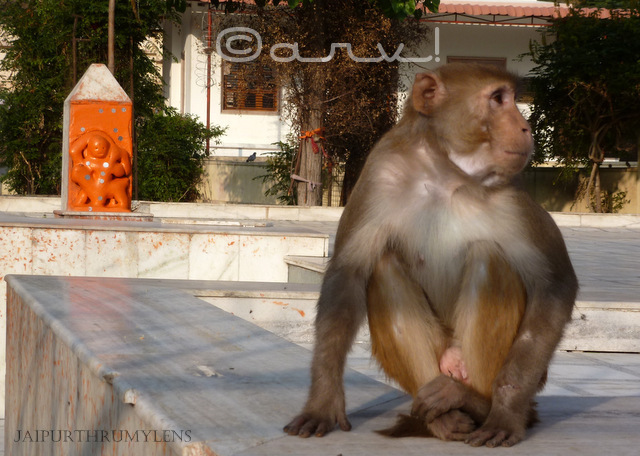
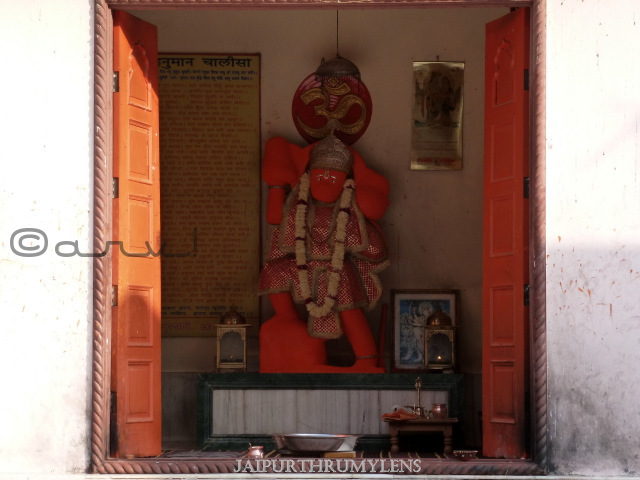
A new temple dedicated to Lord Hanuman has recently been constructed near the entrance. Despite the fact that tourists refer to Galtaji as Jaipur Monkey Temple, there’s no connection between monkeys with the temple. It is being called so because of the presence of a large number of monkeys in the temple complex.
Important Information For Visiting Monkey Temple At Galta Ji Jaipur
How to reach?
It is not difficult to reach Galta ji from Jaipur.
Galta Ji Direction
This ancient pilgrim is in a valley beyond the Sun Temple on the eastern hill range. Some people refer to it as Galta Hills while travelers call it Jaipur Monkey Valley owing to the large number of monkeys here. Read about Monkey Valley in Jaipur
Where is this famous Monkey Temple located?
Surrounded by hills on all three sides, one can reach Galtaji temple by a hilly path that starts from Galta Gate or through Ghat ki Guni. The former is essentially a pedestrian route and is close to the city.


Caveat: Do note that the Galta Gate path is filthy and full of aggressive monkeys.
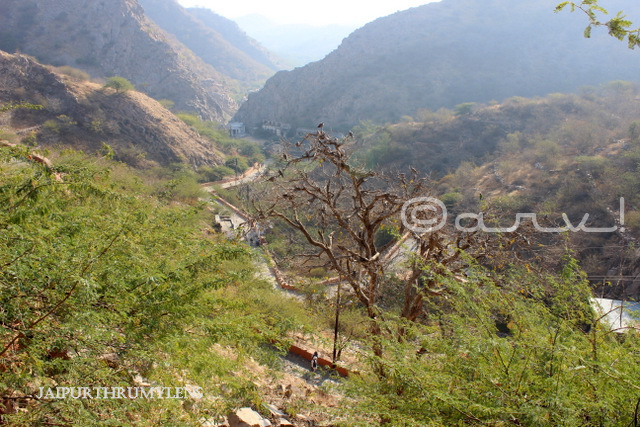
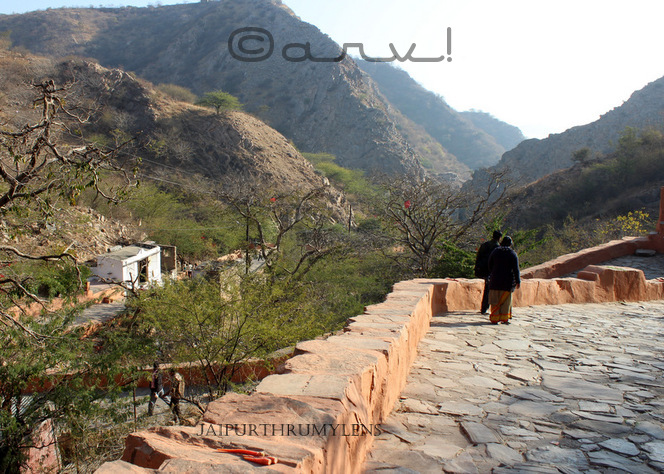

The latter route is longer, approximately 10-12 km from the city center, and passes through a beautiful alley called Ghat Ki Guni as well as a forest.
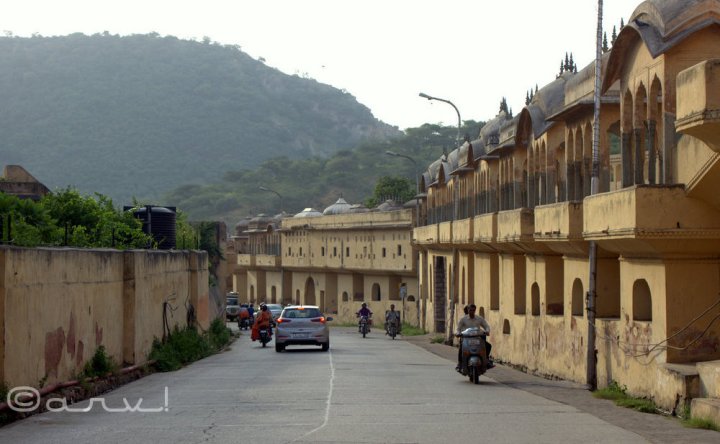
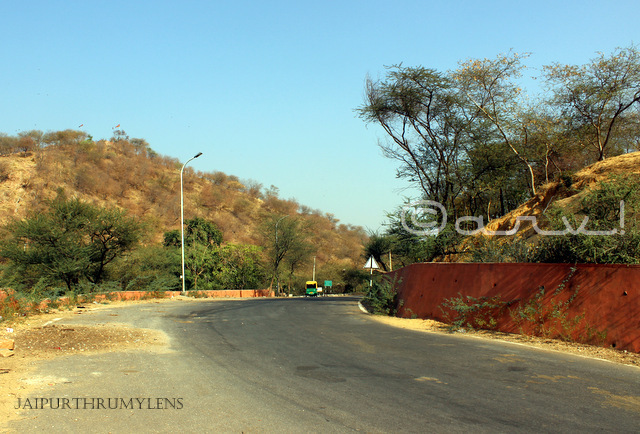
If you don’t prefer the pedestrian path or walking, this is the only choice you have. There is no public transport facility from the Ghat Ki Guni route. You will not find any cab or Tuk-Tuk/ Auto-Rickshaw for your return journey either.
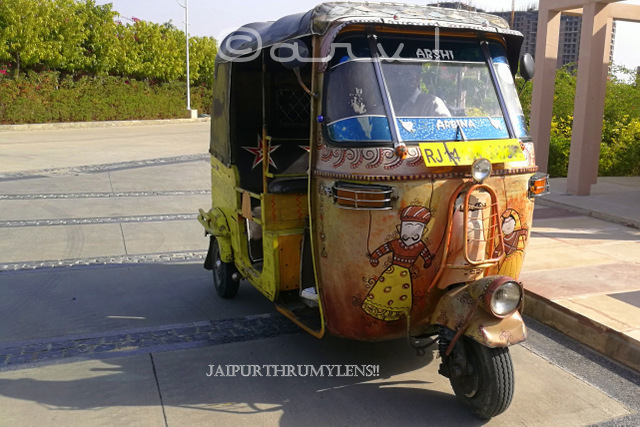
If you prefer to save money and use public transport or Tuk-Tuk, it is best to opt for the Galta Gate route. Both public transport and Tuk-Tuk are available for this option from the walled city area. It takes about 20 minutes of walking for a fit person to reach the temples from the Galta Gate. I will suggest UBER Hire if you opt for the Ghat Ki Guni route otherwise, UBER mini is available easily for Galta Gate from the city. Another alternative to UBER is the OLA cab.
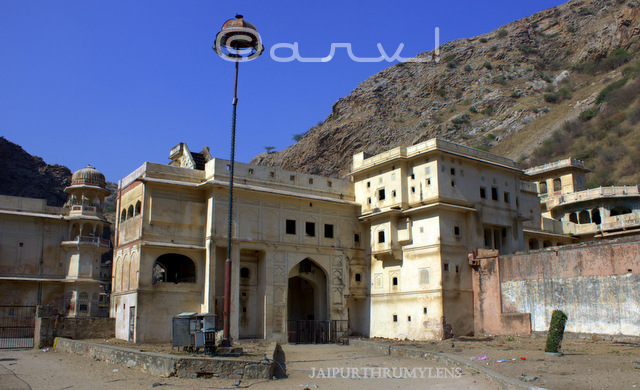
Timings
Monkey Temple is open throughout the day for visitors from sunrise to sunset.
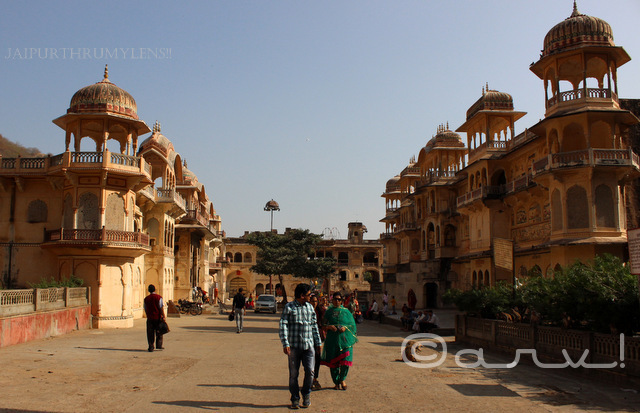
Best Time To Visit
The best time to visit Galta Ji is either morning around Aarti time or in the evening. The Aarti time at Galta Ji Temples is not fixed and varies from season to season.
Dress Code For visiting Galta Ji
Dress conservatively. The dress code for females- do not to wear short dresses. Galta Ji is a pilgrim place visited by a large number of devotees; it is best to dress as per local customs and culture.
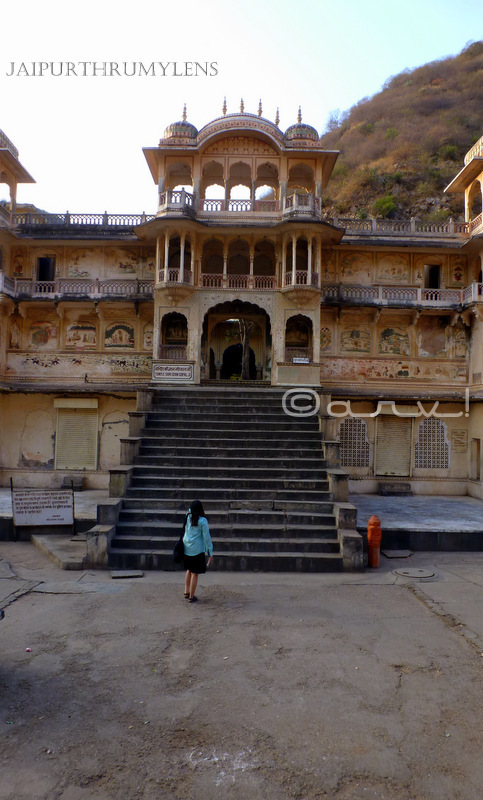
Best Days To Visit Galta Ji
The best days are Makar Sakranti and Kartik Purnima. The latter varies every year as the date is based on the Hindu calendar. You can check for the same on the Internet. Kartik Purnima is an auspicious day in Hinduism and a reason for devotees to visit Pushkar during Pushkar Fair. Like Pushkar lake, they take a dip in the holy water of Galta Kund.
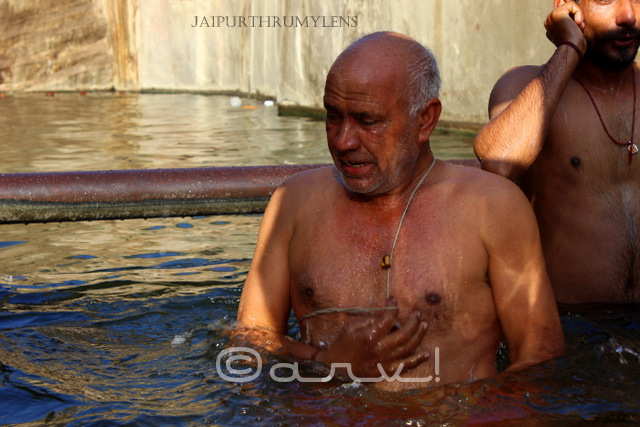
Entry fee
There is no entry fee for visiting Galtaji Temples. However, the temple management charges Rs 50 for the camera/mobile photography which I feel is not unreasonable. You can also make an offering if you wish, to help the management in maintaining this heritage & pilgrim site. Given the fact that temple management has limited resources to generate money, it counts.
Galta Ji remains an offbeat tourist attraction in Jaipur. Recommended for those looking beyond the usual tourist places to see in Jaipur. A visit to Monkey Temple in Jaipur is an enriching experience as it depicts the local culture and religion. From my own experience, you will enjoy this important religious & heritage site when you have someone who can narrate its history, otherwise, it’s just another place.
Check out Places to visit in Jaipur
Stay updated with Jaipurthrumylens!! via: Facebook Twitter Instagram
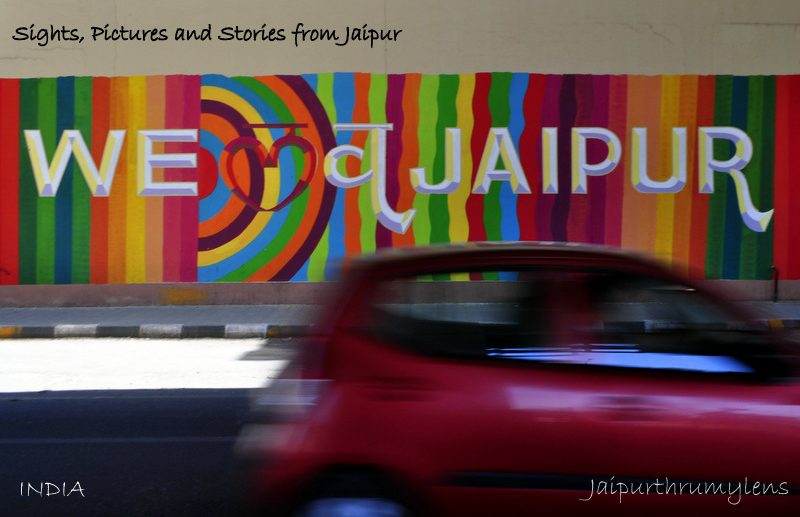



Oh I wish we knew about this temple before we were in Jaipur. I love the old architecture, even the abandoned one looks interesting. Rhesus macaques aren’t my favourite, but I’d still go to see them. Don’t worry I never feed them and certainly wouldn’t shake thei hand! That’s crazy! Thanks for recommending this post.
LikeLiked by 1 person
Rhesus Macaques are aggressive species. It is best to avoid them. I’m sure you will love exploring this place.
LikeLiked by 1 person